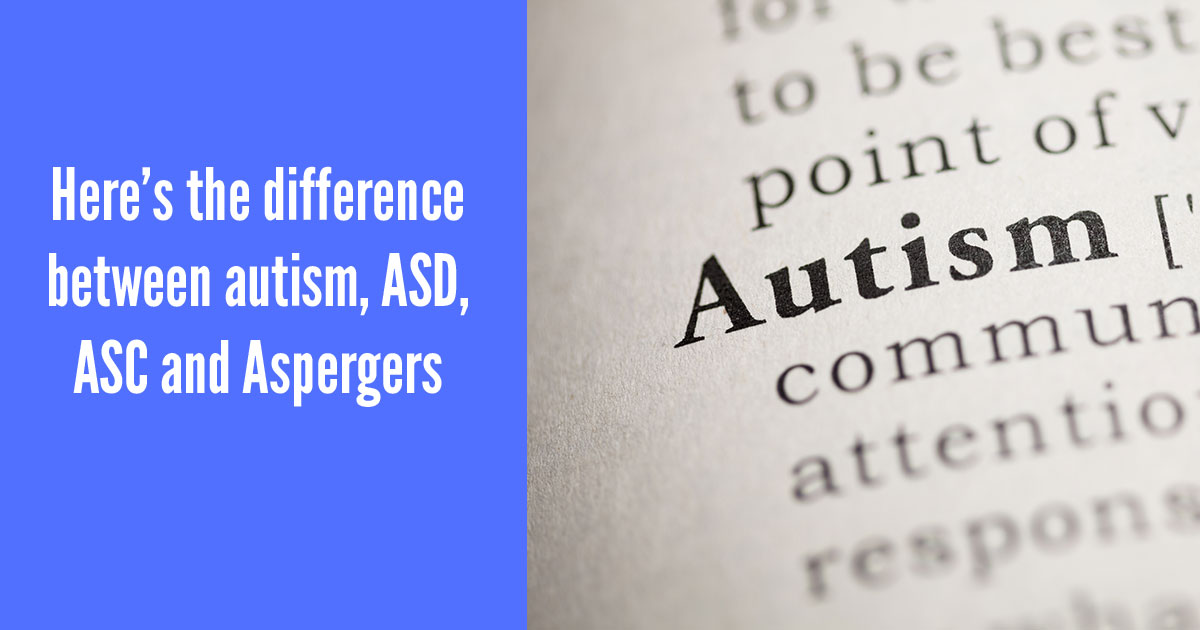Students can come with a bewildering range of diagnoses.
And as educators – people who don’t specialise in mental health – these terms can feel frustrating and confusing.
Linking the right need with the right strategy is essential for classroom success. But sometimes, with so many labels flying round, it’s hard to know where to begin.
The following terms often get used interchangeably – but what does each specifically mean?
- Autism
- ASD
- ASC
- Aspergers Syndrome
Here’s a quick explanation, so you can pick the right teaching approach, first time, every time.
What is autism?
Autism is a complex condition that affects different pupils in different ways.
Here are some common examples you may see in the classroom:
- Sensory input – a student may be over- or under-sensitive to certain senses. This can cause discomfort and anxiety throughout the day, raising stress levels.
- Coping with change – students might find changes of routine, task or location a source of anxiety.
- Communication – pupils may find it difficult to process language or give information to others, either in written and verbal form.
- Empathy – students may have difficulty understanding the world from another’s point of view. This can include reading emotions, thoughts or intentions.
- Social skills – the student may struggle to understand social rules and expectations the rest of the class take for granted. This can make it difficult for pupils to integrate with classmates.
- Eye contact – many students with autism describe making eye contact as physically painful, and will go to great lengths to avoid it
- Ability to abstract or generalise – students with autism may find it hard to apply knowledge from one area of their life to another. This may result in them having to re-learn the same skill over-and-over in different contexts (eg. how to give a compliment in class, how to give a compliment on the playground, how to give a compliment at home, how to give a compliment at the shops…)
(That’s already a long list, and it’s by no means exhaustive – for more detailed information, check out this page from the NHS.)
Autism exists on a spectrum. So… what’s a spectrum?
‘Spectrum’ means autism affects different people in different ways.
Autism can significantly and visibly impact every area of your life, or you may be ‘high-functioning’, and that impact is less obvious.
So autism isn’t like a light switch, which is either on or off. It’s more like a dimmer switch, with many variations of brightness.
That means no two people with autism are exactly alike.
Here’s another way of thinking about what that means: imagine each of the bullet points listed above has a volume control attached to it.
Each person with autism has their own set of volume dials, some turned up high, some turned down low.
For example: a student may be significantly affected in how they respond to the senses, so that volume control is turned up to a 9 or 10. But their autism affects their empathy to a lesser extent, and that dial is turned to a 3 or 4.
The result is every person with autism has their own set of dials, uniquely describing their individual needs and preferences.
And these will be different from everybody else.
So… what’s ASD?
ASD stands for ‘autistic spectrum disorder‘.
It’s the label given by medical professionals to someone with autism.
So, to all intents and purposes, the terms ‘autism’ and ‘ASD’ mean the same thing.
Medical professionals will always use the term ASD when referring to the condition.
And ASC?
ASC stands for ‘autistic spectrum condition‘.
This term is sometimes used by those outside the medical profession to describe someone with autism.
Education and social care professionals are questioning whether autism should be viewed as a disability, as indicated by the word ‘disorder’. They also want to move away from the negative images associated with the term.
For instance, some students with autism may be gifted in some areas and function successfully in school and society.
The abbreviation ASC is becoming more widespread in use, especially in schools.
What is Aspergers Syndrome?
Aspergers Syndrome is a very specific form of autism.
People with Aspergers would have their volume dials tuned in a very similar way. The result would be a similar set of needs.
Aspergers is a high-functioning form of autism. Students with the condition will often be of average or above average intelligence.
However, students may still have some specific learning needs – and these may often go unnoticed until later in the pupil’s school career.
Students with Aspergers may also need support with their ability to integrate socially, and how to relate to their classmates.
Pupils may also suffer from very high anxiety levels.
Why does it have a different name?
The short story is:
- Aspergers Syndrome is a condition that was discovered in the 1940s.
- Over time, scientists realised Aspergers had elements in common with other conditions
- Autism was the name given to the ‘spectrum’ that encompassed these conditions
- Which means Aspergers is a specific type of autism
Summary
As far as everyday classroom practice is concerned:
- autism, ASD, and ASC mean the same thing
- autism exists on a spectrum – it affects people to differing degrees
- Aspergers is a specific point on that spectrum
If you found this information useful, then check out our article on understanding the difference between autism and ADHD.

